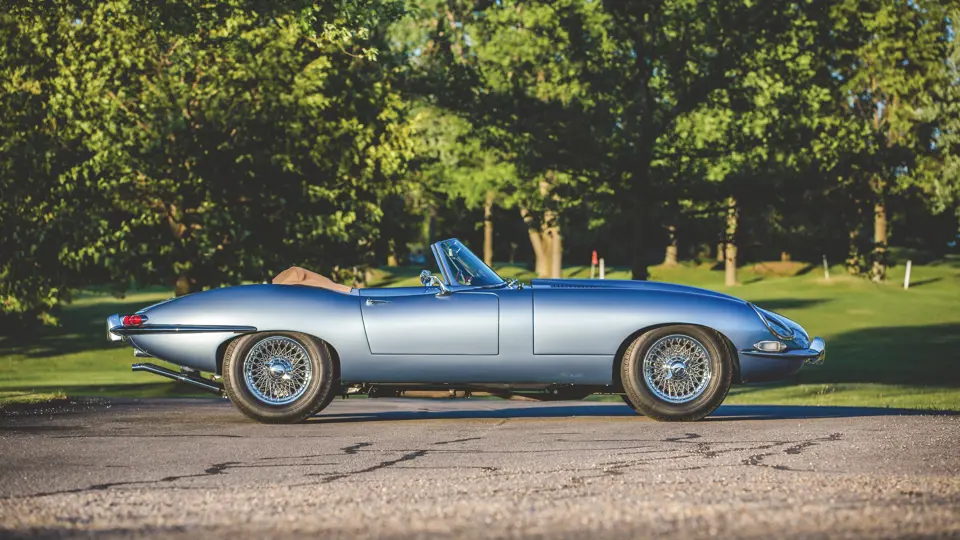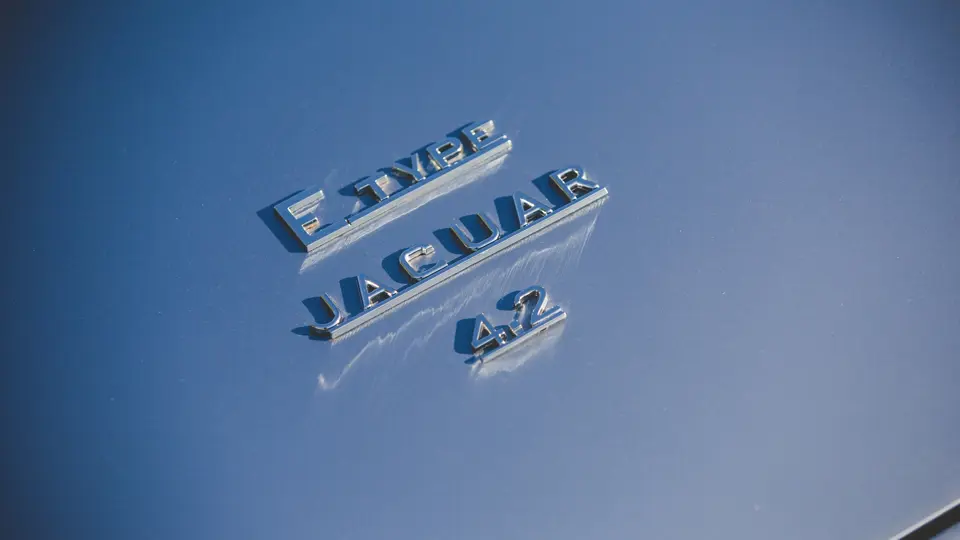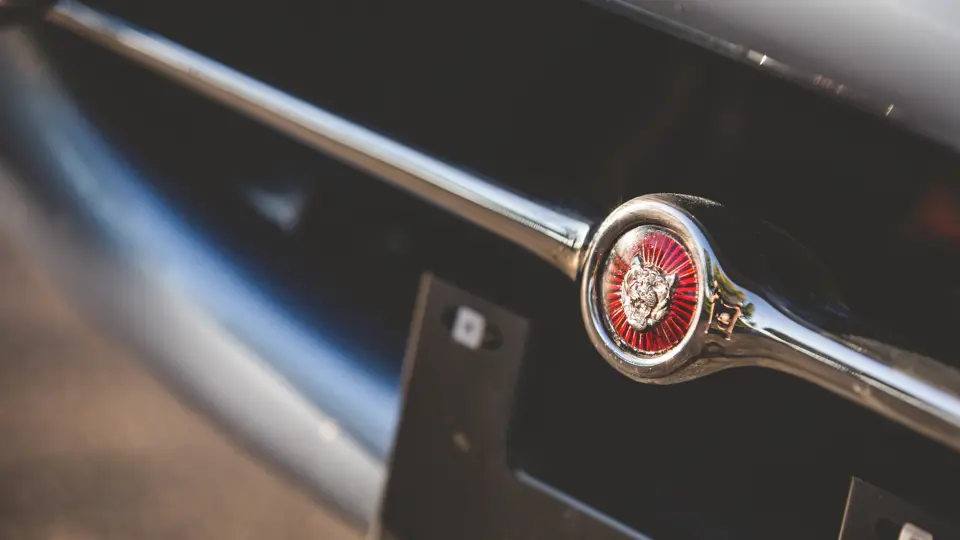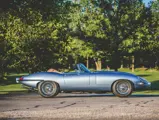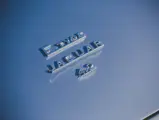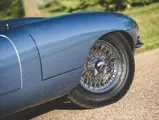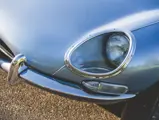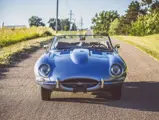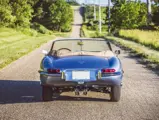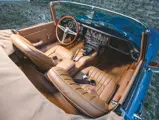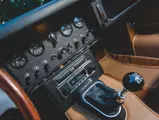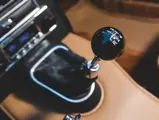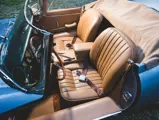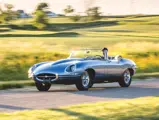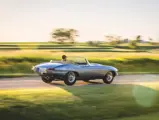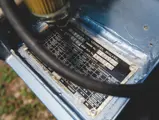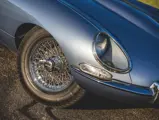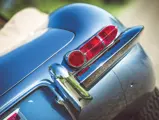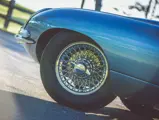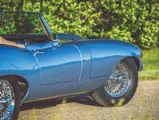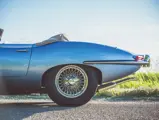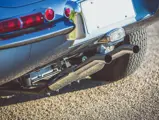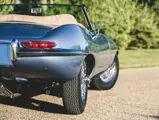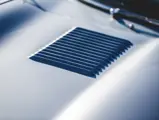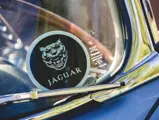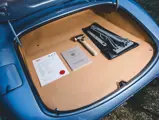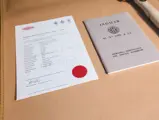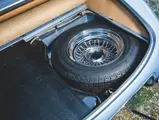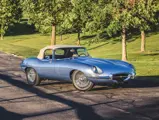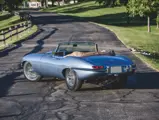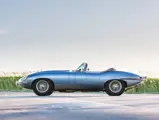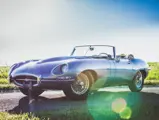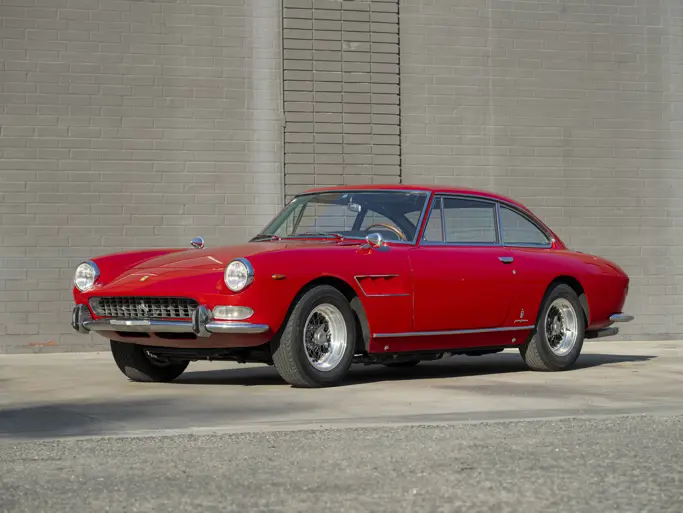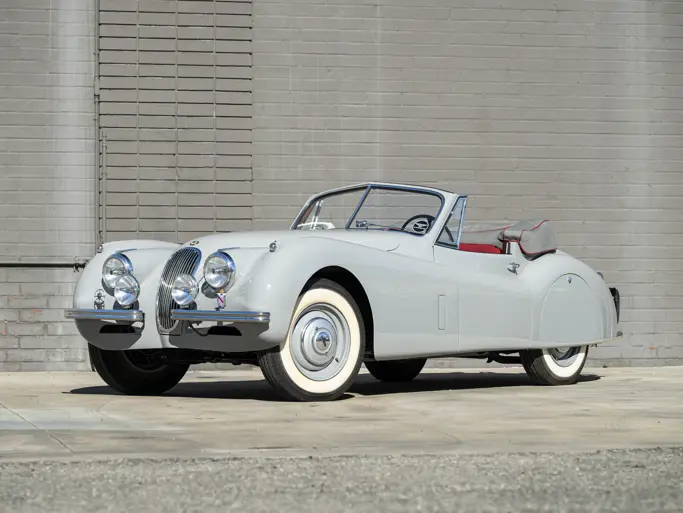
1965 Jaguar E-Type Series 1 4.2-Litre Roadster
{{lr.item.text}}
$176,000 USD | Sold
{{bidding.lot.reserveStatusFormatted}}
- Desirable Series 1 roadster with the more powerful 4.2-Liter engine
- Believed to be one of fewer than 6,000 Series 1 4.2-Litre left-hand-drive roadsters
- Accompanied by JDHT certificate, owner’s handbook, knock-off hammer, and jack with bag
The Jaguar E-Type was launched at the Geneva Motor Show in May of 1961. It was designed by William Lyons and aerodynamicist Malcom Sayer, and it was based closely on the three-time Le Mans 24 Hours-winning D-Type. It was built in steel instead of aluminum, and the one-piece hood tipped forward for unparalleled access. Front and rear sub-frames carried the engine and rear axle, and could be unbolted for access, while the center tub was immensely strong. The E-Type had independent suspension with torsion bars up front, and coil-over springs at the rear. Dunlop disc brakes were fitted all round, and the rear brakes were inboard.
The E-Type was upgraded in 1964, with an increase in engine size from 3.8 liters to 4.2, as well as better brakes and improved electrics. Horsepower stayed the same at 265 brake horsepower, but torque increased to 283 pounds-feet from 260. The 4.2-Litre E-Type retained its stellar performance with 0–60 mph in 6.5 seconds, 0–100 mph in 16.2 seconds, and a top speed of 150 mph.
This 1965 E-Type Series 1 4.2-Litre Roadster left the Jaguar factory finished in Opalescent Dark Green with a black top and beige interior. A left-hand-drive example destined for North America, it was distributed through Jaguar Cars New York. While the selling dealer was not recorded, the car’s first owner was listed as Herluf D. Jensen.
Today the E-Type presents nicely, having benefitted from extensive refurbishment under previous ownership. Work reportedly included replacing the body tub sheet metal, with the exception of the bulkheads and the bonnet section, boot lid, and inner door panels. Upon completion of the metalwork, the body was painted in Silver Blue with a cinnamon leather interior and tan top. The interior is nicely appointed with a wood-rimmed steering wheel and an upgraded modern radio unit.
The engine and drivetrain—with the exception of the transmission—were reportedly rebuilt, and the suspension is believed to have been overhauled with new bushings and ball joints. New brakes were also said to have been fitted, the fuel system and cooling system overhauled, and all electrical parts rebuilt or replaced as necessary. In addition to the JDHT Certificate, an owner’s handbook, jack with storage bag, and knock-off hammer are also included.

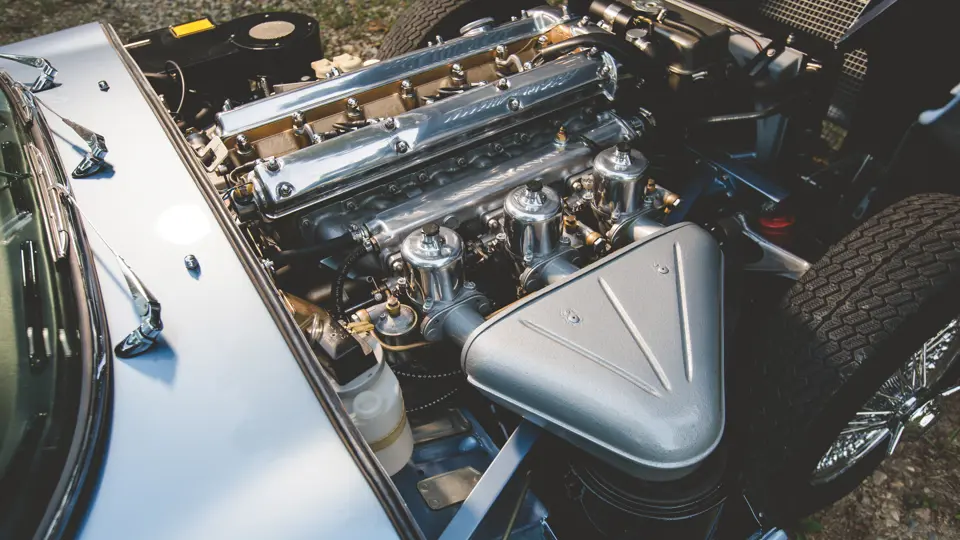


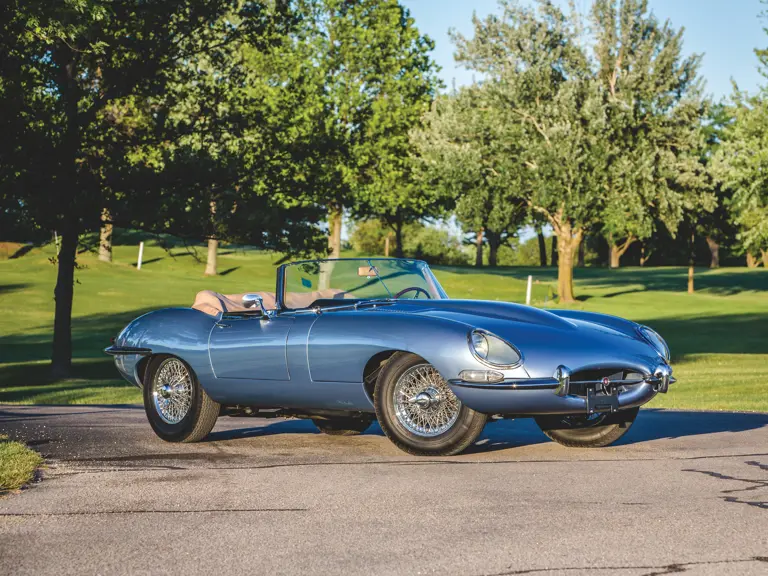
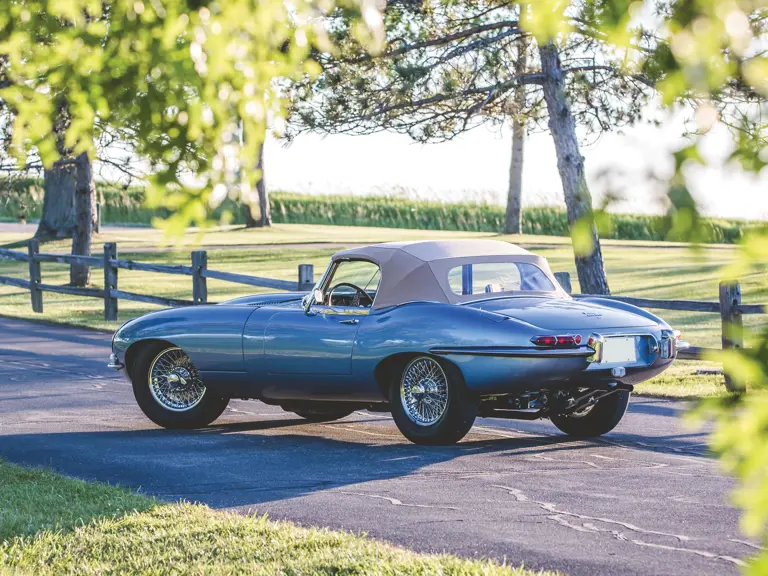

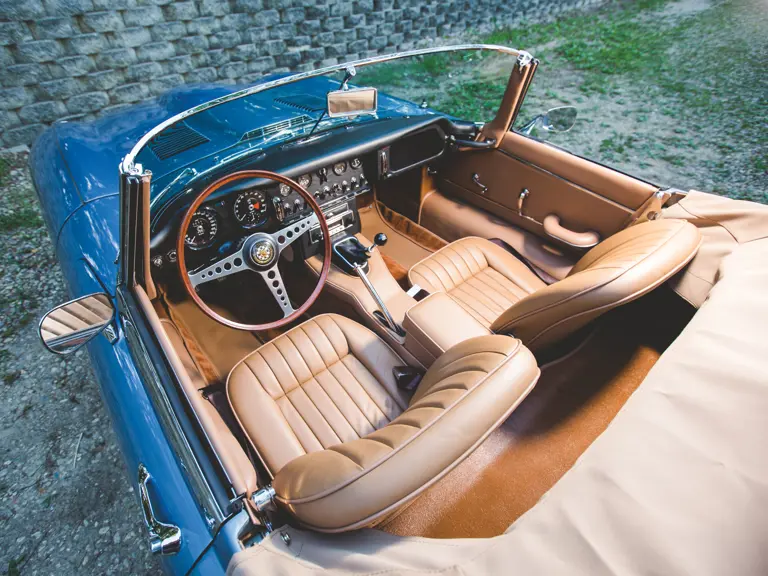
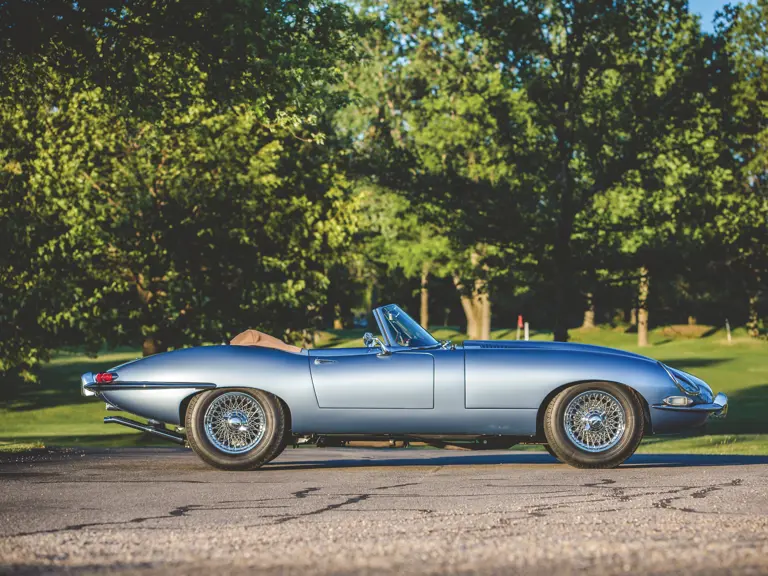
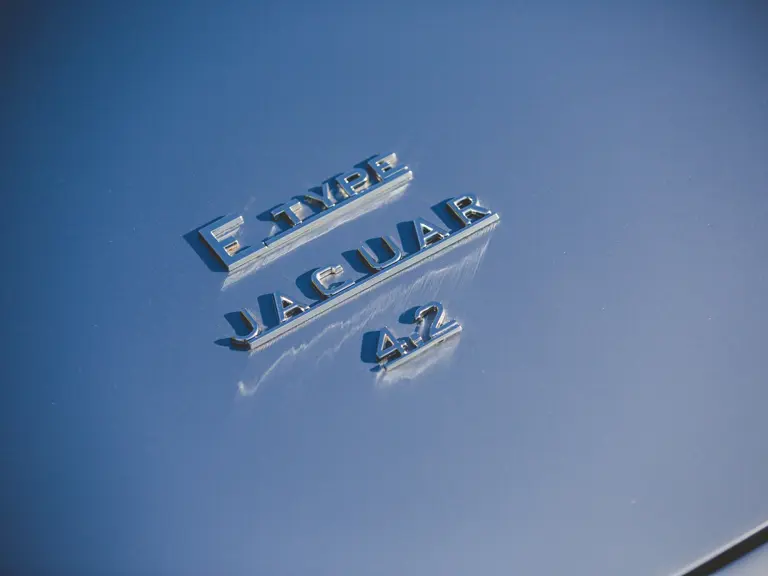
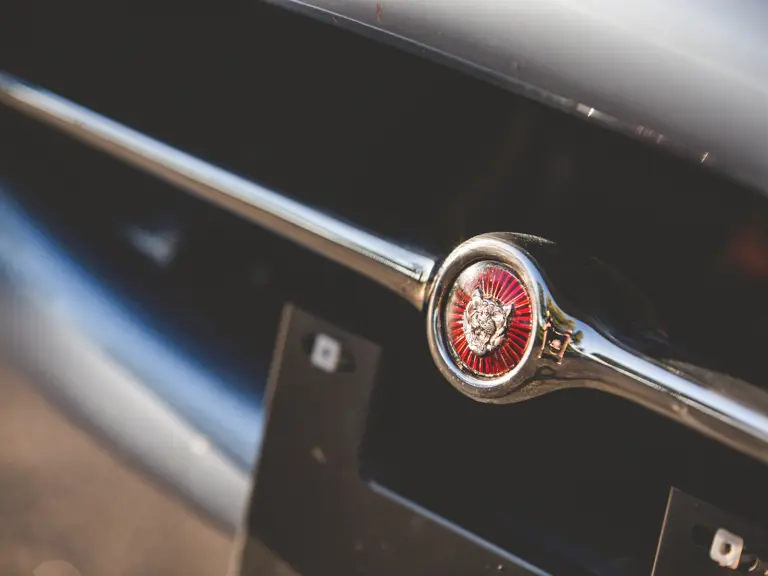
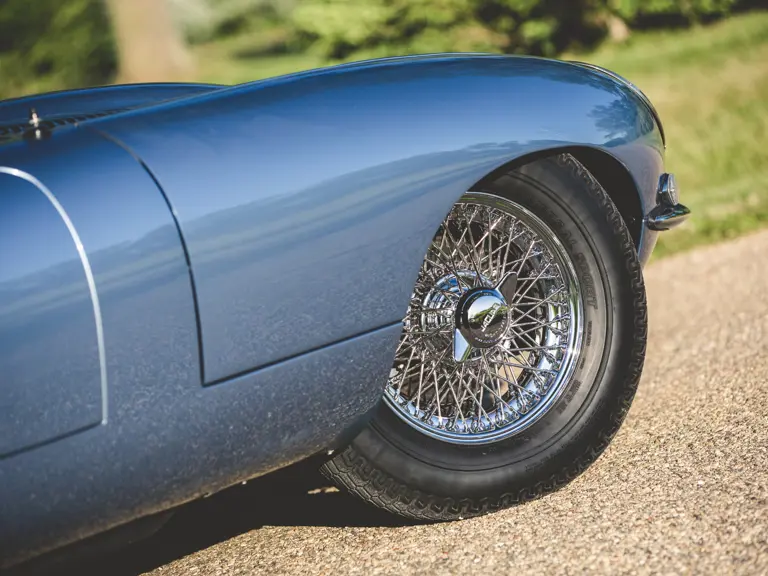
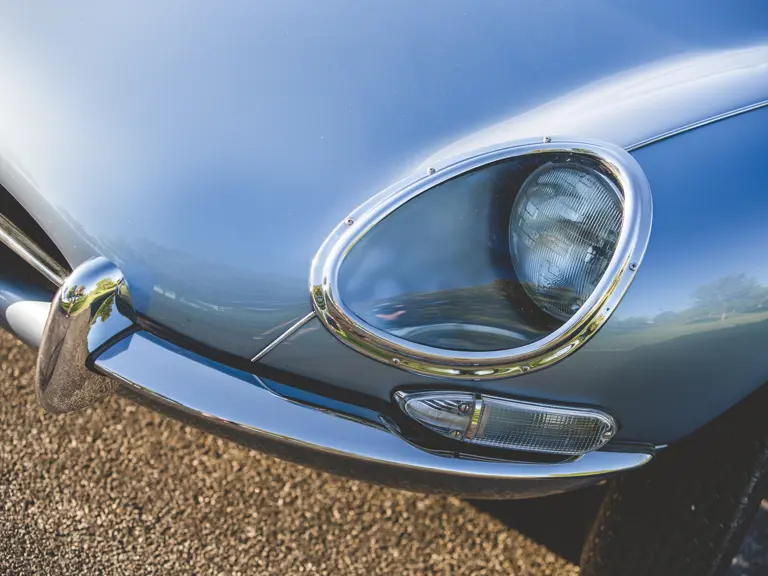
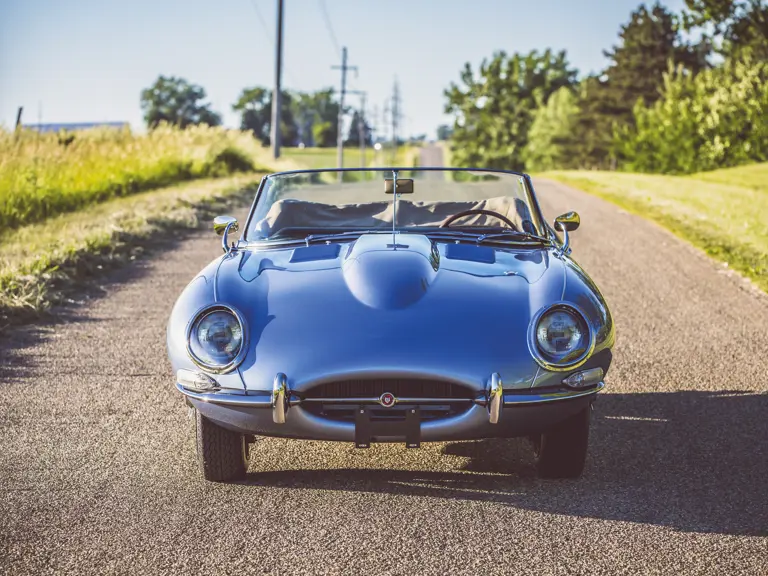
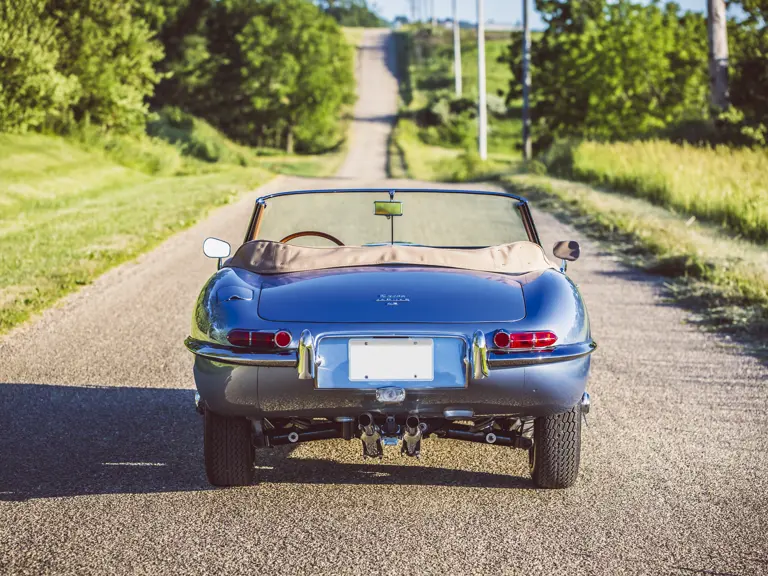


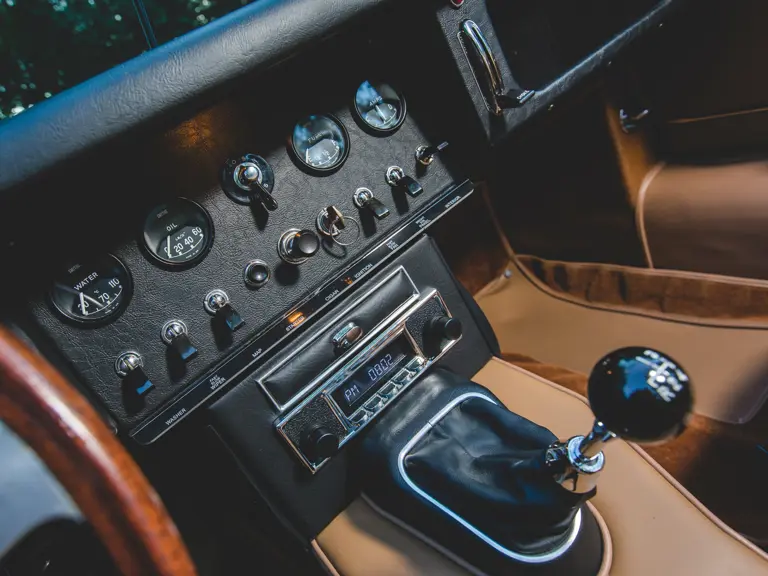
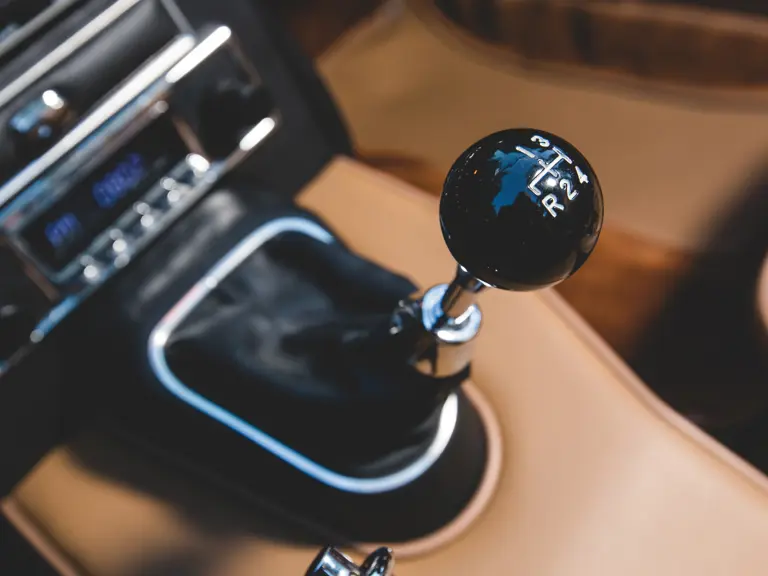

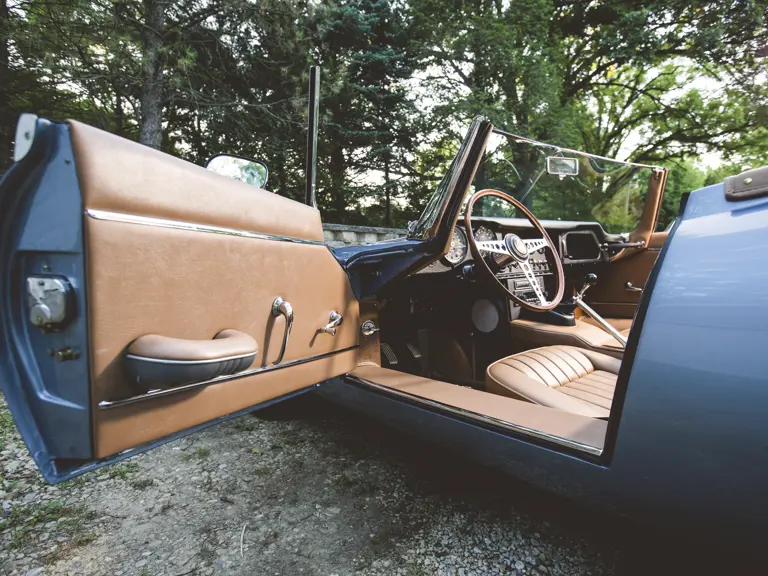
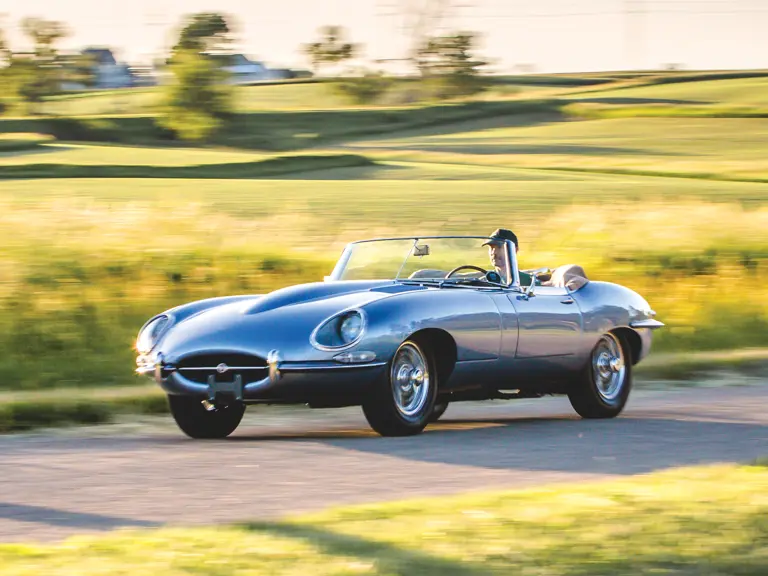
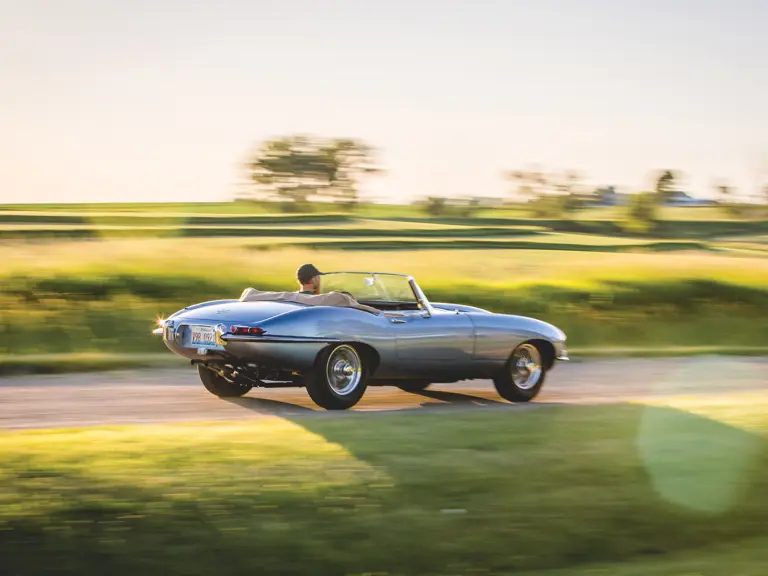
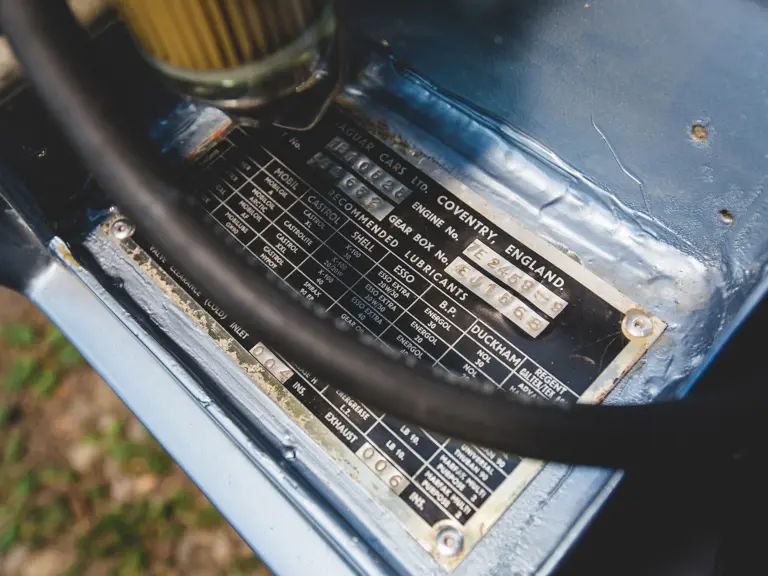

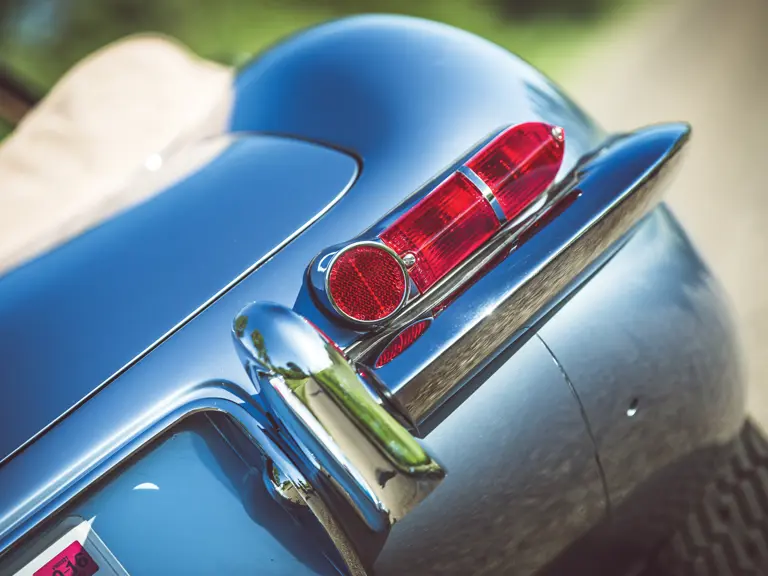
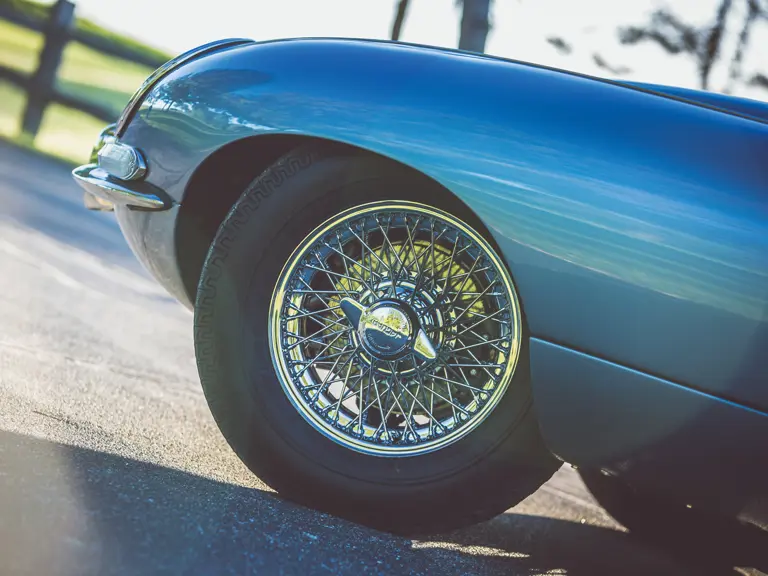
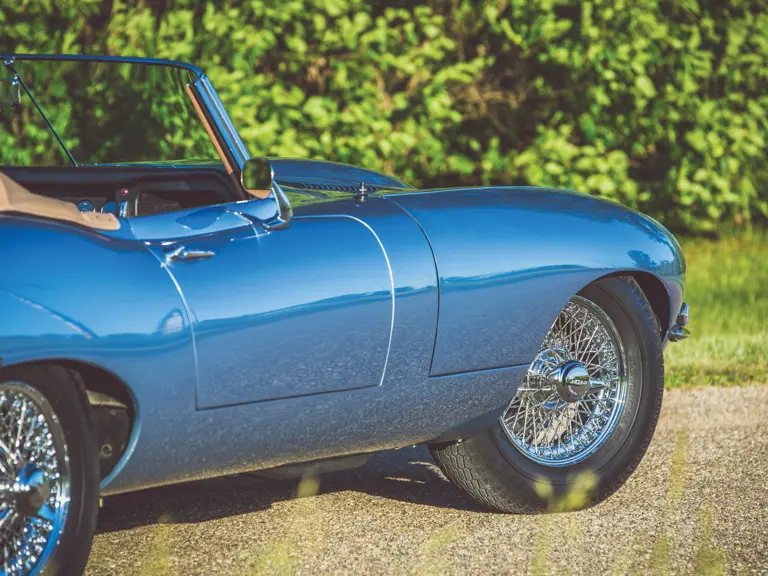
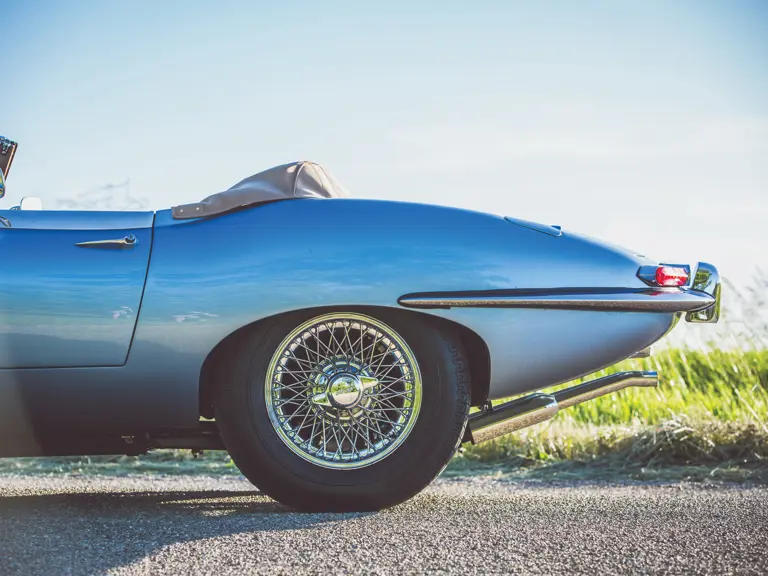
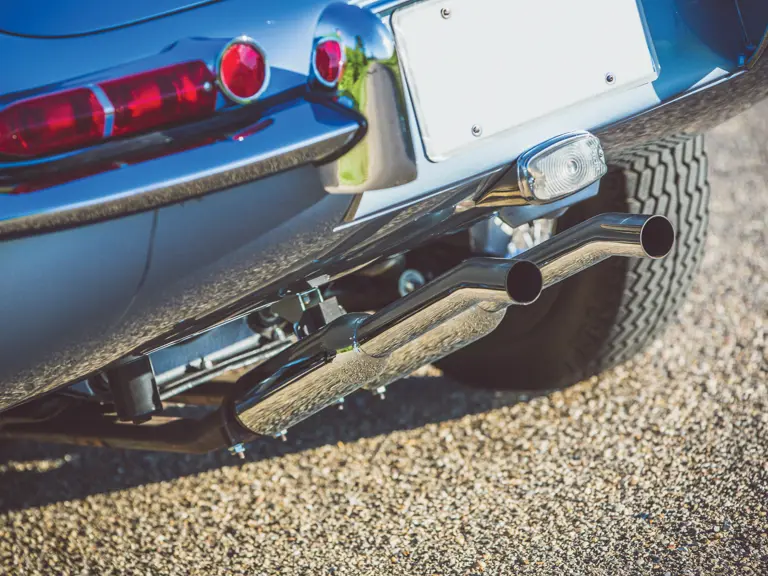
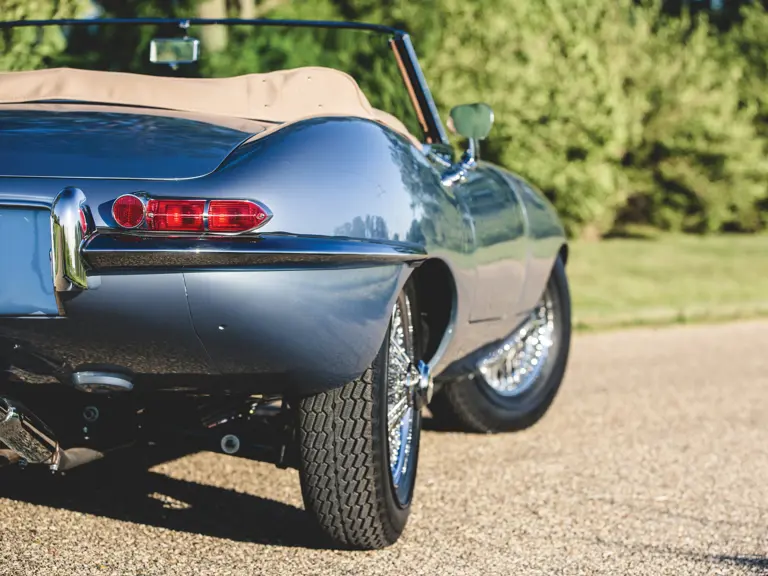

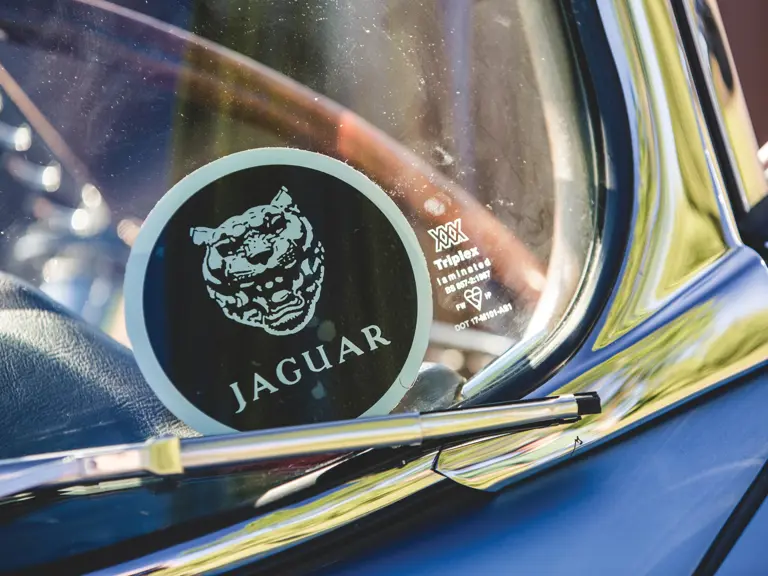
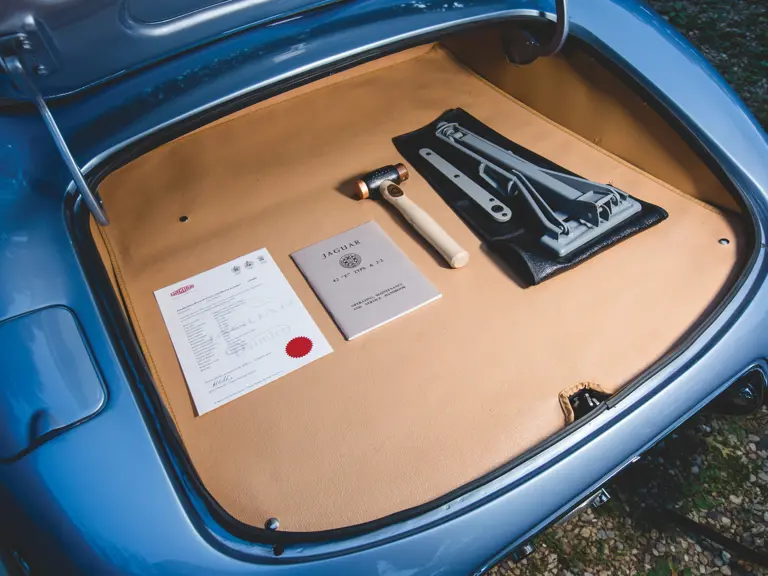
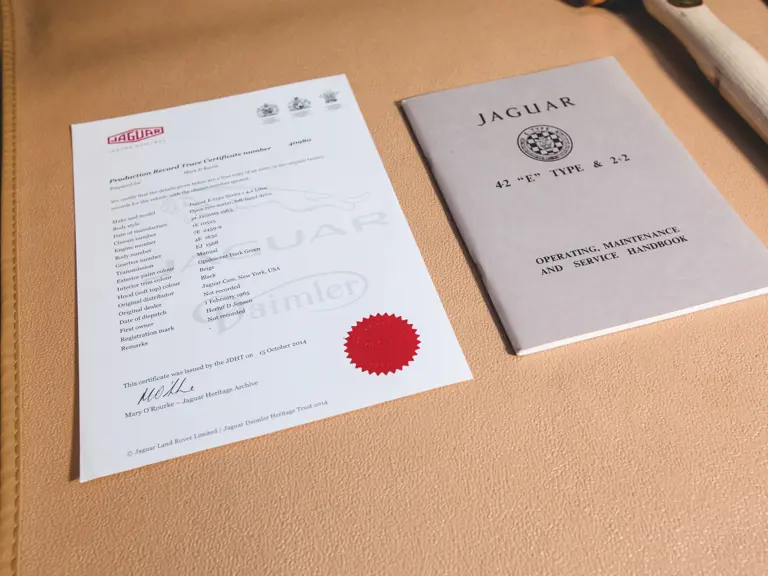
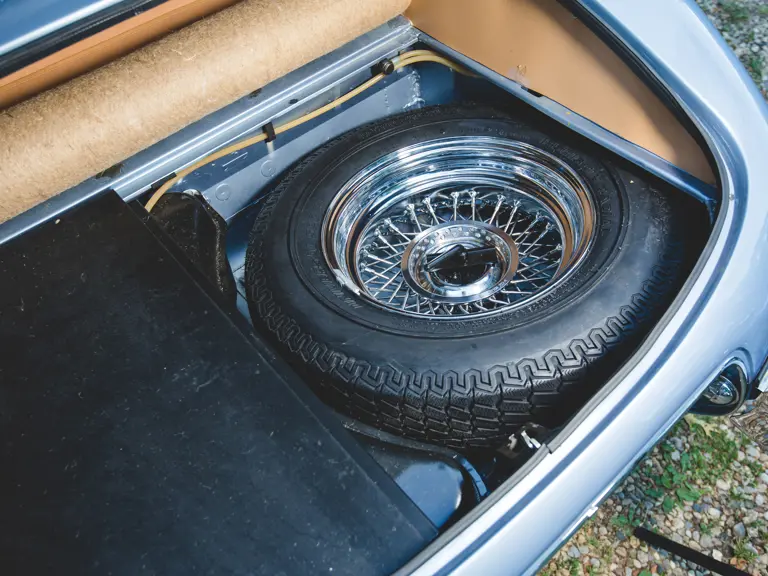
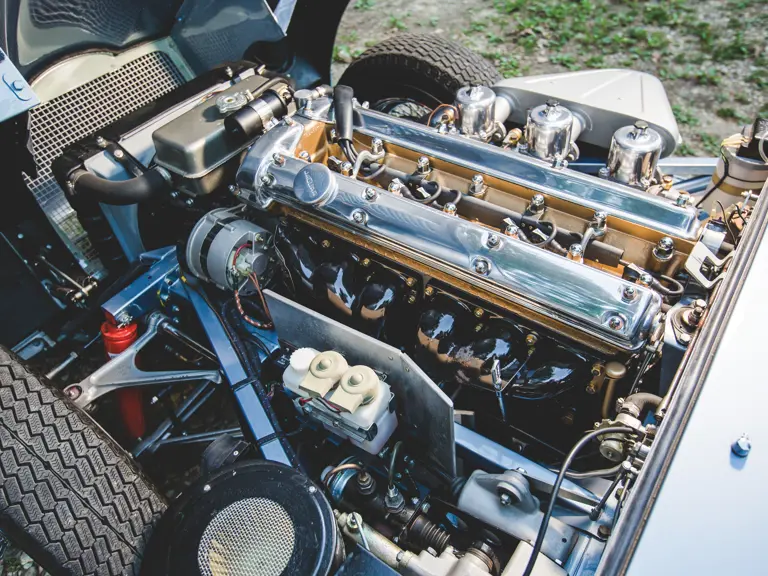
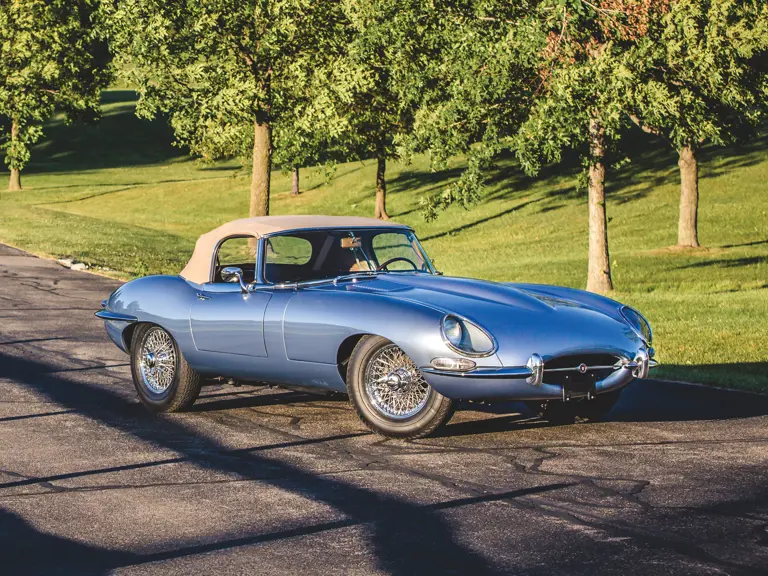
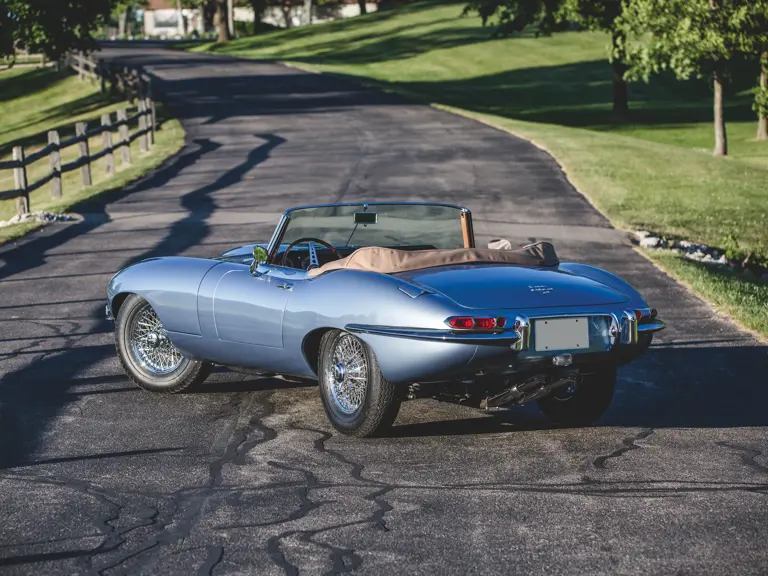

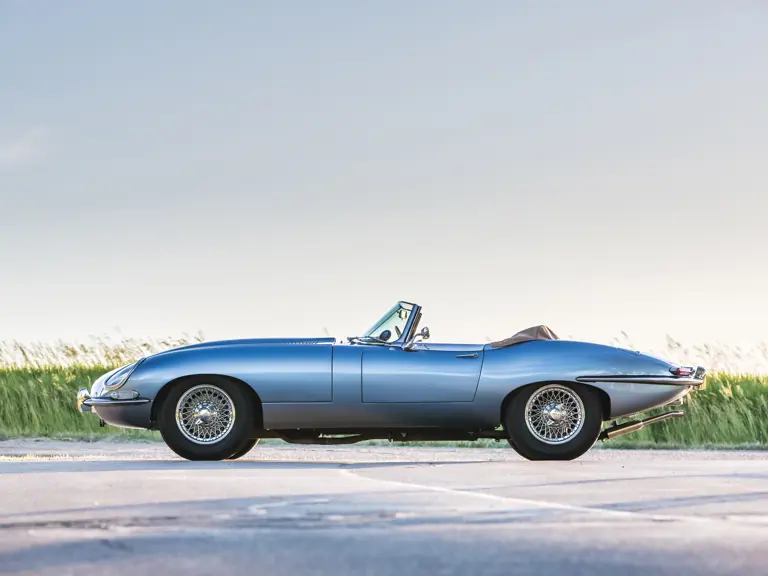
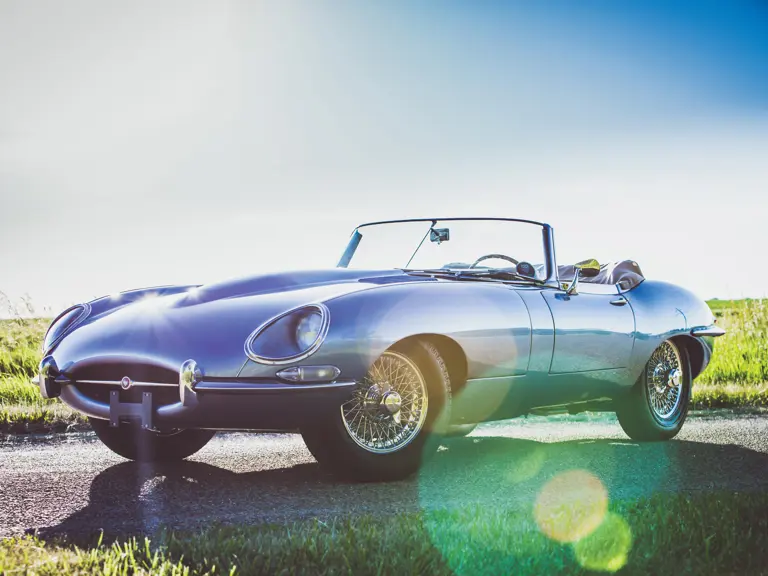
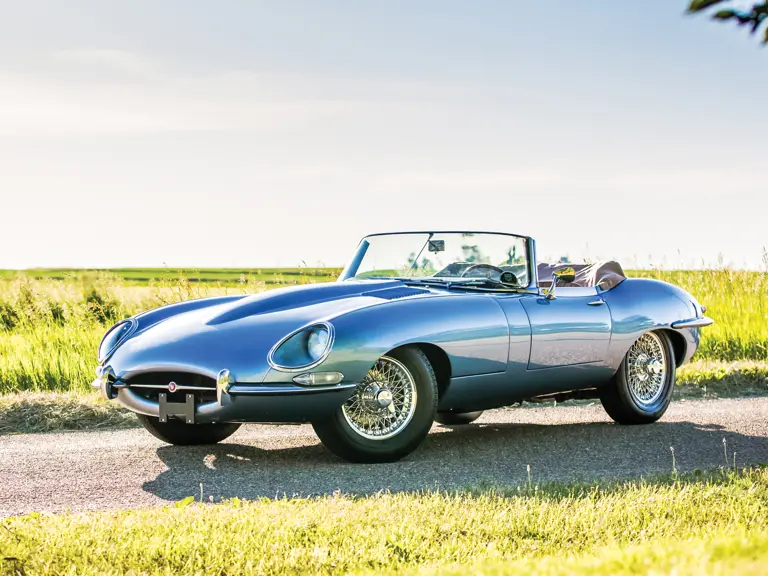
 | Cleveland, Tennessee
| Cleveland, Tennessee
